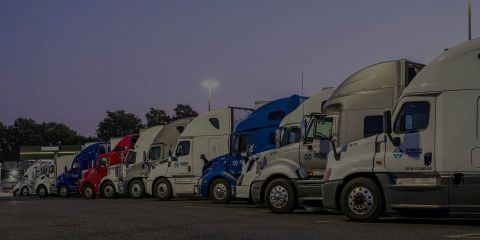
Currently, Toronto's warehousing sector faces challenges like inefficient processes and rising labor costs. Traditional setups are struggling to keep up with modern demands. However, the industry is poised for transformation with the integration of AI and automation. These technologies promise to streamline operations, enhance efficiency, and reduce costs. As a result, implementing AI-powered inventory management systems and automated material handling solutions is becoming increasingly common. Such advancements both optimize inventory levels, improve order accuracy, and speed up fulfillment processes! So, as the industry moves, the impact of AI and automation on Toronto’s warehousing sector is being felt.
AI-powered inventory management
AI-powered inventory management has the potential to significantly improve traditional warehouse operations, making effective inventory management possible. After all, by harnessing the power of artificial intelligence, warehouses can optimize stock levels. This technology analyzes vast amounts of data, including historical sales data, market trends, and seasonality, to precisely predict future demand. As a result, warehouses can maintain optimal inventory levels, minimizing storage costs and maximizing space utilization. Additionally, AI algorithms continuously learn and adapt, refining their predictions over time to further enhance efficiency. So, with AI-driven inventory management systems in place, warehouses can streamline their processes, improve order fulfillment rates, and enhance customer satisfaction.
Automated material handling systems
Automated material handling systems significantly advance warehouse operations, enhancing how goods are moved and processed. These systems, including robotic palletizing and conveyor belts, automate repetitive tasks once performed manually. By replacing manual labor with automation, warehouses in Toronto can significantly increase efficiency and productivity while reducing human error. For instance, robotic palletizing systems can quickly and accurately stack pallets, optimizing space utilization and minimizing product damage. Similarly, conveyor belts facilitate the smooth flow of goods throughout the warehouse, speeding up the order fulfillment process. With automated material handling systems, warehouses can handle higher volumes of inventory faster and more precisely.
Predictive maintenance with AI
Predictive maintenance is yet another potential reflection of the impact of AI and automation on Toronto’s warehousing sector. After all, AI can analyze data patterns to predict potential equipment failures before they occur! This proactive approach allows warehouses to schedule maintenance activities strategically, minimizing downtime and preventing costly breakdowns. For instance, sensors embedded in machinery can continuously monitor performance metrics, feeding real-time data to AI systems for analysis. When anomalies or signs of potential failure are detected, alerts are generated, enabling maintenance teams to intervene promptly. As such, implementing predictive maintenance improves equipment reliability and longevity, reduces maintenance costs, and enhances overall operational efficiency.
Coordination with support businesses
Through leveraging AI automation, warehouses can seamlessly integrate services from external providers, enhancing efficiency and productivity. For example, suppose you require the services of Miracle Movers Toronto, one of the very best moving companies in the area, which provides a wealth of packing, moving, and more personalized assistance. In that case, you can more easily coordinate everything using AI automation! AI algorithms can analyze scheduling data and logistics requirements to optimize coordination with support businesses, achieving timely deliveries and services. This level of automation minimizes manual intervention and reduces the risk of errors, ultimately improving overall workflow.
AI-enabled demand forecasting
Analyzing historical data, market trends, and external factors, AI algorithms can predict demand patterns with remarkable precision. This proactive approach allows warehouses to anticipate fluctuations in demand and adjust their inventory levels accordingly, minimizing the risk of stockouts or overstocking. Moreover, this makes it easier to handle things like the demands of refrigerated warehousing, too. By accurately forecasting demand for perishable goods, warehouses can maintain optimal storage conditions and prevent wastage. Therefore, AI-enabled demand forecasting enables warehouses to optimize their supply chain processes, improve inventory turnover rates, and enhance overall operational efficiency.
Robotics in warehouse operations
Robotic systems significantly enhance efficiency and accuracy, improving overall productivity. For instance, robots can swiftly navigate warehouse floors, retrieving items with precision and speed. This automation reduces labor costs and minimizes the risk of errors associated with manual handling. With robotics in place, warehouses can handle increased order volumes more effectively, meeting customer demands efficiently. Besides, robots can more easily adapt to fluctuating demand, scaling operations accordingly to achieve timely order fulfillment.
Enhanced safety measures with AI
Leveraging AI-powered safety systems, warehouses can detect and mitigate potential hazards in real time, ensuring a safer working environment. For example, computer vision technology can monitor employee movements and identify safety risks, such as collisions with equipment or obstacles in walkways. Then, by proactively addressing these risks, AI enhances workplace safety and reduces the likelihood of accidents. Furthermore, this improved safety protects employees and minimizes downtime and associated costs. So, by investing in AI-driven safety solutions, you can enhance your reputation for safe workplaces and improve your logistics!
Leveraging the impact of AI and automation on Toronto’s warehousing sector
The impact of AI and automation on Toronto’s warehousing sector is undeniable. As businesses embrace these technologies, they unlock new efficiency, safety, and sustainability levels. From predictive maintenance to robotics, warehouses are experiencing a paradigm shift in how they operate and meet the demands of a rapidly evolving market.
For over 30 years, 18 Wheels Logistics has strived to be the most customer-centric trucking, warehousing, and logistics company around.
Based in Vancouver, British Columbia, Canada, 18 Wheels relies on experience and integrity to make customers happy and remain on the cutting edge of shipping and logistics management.
If you have any questions about this article or you would like to talk to us about your shipping needs, please call us at (604) 439-8938.
